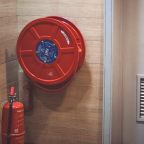
How to Turn Your Passion into Profit: The Rise of Print-on-Demand in the Creative Economy
In today’s rapidly evolving digital landscape, creatives have never had a better time to turn their passion into profit. Thanks to innovations like print-on-demand (POD) services, artists, designers, and entrepreneurs are no longer held back by the costs and complexities of traditional manufacturing. Instead, they can bring their ideas to life and share them with the world, all while avoiding inventory risks or upfront investments. Among the top POD providers, numerous platforms enable creatives to produce custom products quickly, and the benefits of these services are clear—more flexibility, lower costs, and endless possibilities.
The Print-on-Demand Revolution
Print-on-demand has provided a solution that has democratized the manufacturing and selling of products in the creative economy. In the past, introducing a product entailed huge initial costs in stock, production, and logistics. This barrier meant that many creative people never got the chance to turn their ideas into a business. The above barriers are not experienced when using POD services. Designers are able to upload designs on websites, and the products are manufactured and shipped as orders come in; hence, there is no need for inventory.
This model benefits individual entrepreneurs and small businesses that wish to diversify their product portfolio without incurring high costs. It is a flexible solution that can accommodate growth for those who are just starting out in their creative careers and those who already have a business that sells merchandise.
Why Print-on-Demand Works for Creatives
The primary advantage of print-on-demand is its versatility, which stems from its minimal complexity. Here’s why it works so well for those in the creative economy:
Low Barrier to Entry
POD services enable artists to venture into business with limited capital investment. Since no physical product is bought, creatives can experiment with various designs and concepts without worrying about having to discard unsellable merchandise. This is especially useful for artists, designers, and content creators who wish to make money from their creations without the pressure of handling logistics or inventory.
Infinite Creative Freedom
POD platforms allow creatives to do what they are best at—creating. After posting the designs, the platform does the rest, including producing the product and delivering it to the buyer. This allows creators to continue practicing their art, trying new concepts, and adding to their portfolios. From clothing to home décor, the fact that one can design products makes creatives offer their services in multiple areas.
No Risk of Overstocking
A key weakness of traditional retail is that it is difficult to predict demand and end up with excess stock. Print-on-demand does away with this risk altogether because products are only manufactured once an order has been placed. If a certain design does not sell, it does not mean that the designer is left with several boxes of unsold merchandise, and therefore, the financial risk is minimized.
Global Reach
The internet has provided creatives with the tools to share their work with people worldwide; print-on-demand services help with this. This way, creatives can deliver products to customers around the globe without having to deal with logistics and customs themselves, as POD providers take care of that.
The Impact on the Creative Economy
For this reason, the growth of print-on-demand is directly proportional to the advancement of the creative economy, which has allowed people to earn a living through their skills and passion. Today, some of the most popular platforms in this field are Etsy, Redbubble, and Printful, which allow artists and designers to sell their products without having to invest in production facilities.
In the case of creative economy, this is a breakthrough. There are more individuals who can work as independent artists, designers, and entrepreneurs, and this leads to the expansion of the market with products that are distinct and specialized. It is indeed shocking to realize that while the retail space was once filled with cheap mass-produced items, it is now full of unique items that are aimed at niche markets. This shift also fosters environmentally friendly consumption since products are created as people order them, cutting down on unnecessary production.
Furthermore, print-on-demand helps creatives to have multiple sources of income. For instance, a graphic designer can still practice his or her work with clients and at the same time sell POD products such as, prints, t-shirts or any other related merchandise. This diversified approach to income generation is gaining popularity as it allows creatives to expand their business without having to invest in large capital or manpower.
Print On Demand Business Ideas
For the creatives willing to dive into the print-on-demand the first thing to do is to select the right platform. While most POD solutions are limited to apparel, accessories, and home decor, some like Printful or Teespring can provide a vast array of products to embellish. Other sites, such as Society6, sell art prints and décor products, which makes them suitable for artists.
The second step in the process is to begin the actual creation of content once you have selected your platform of choice. This is where you can be creative and free. The most important thing in the print-on-demand business is to identify your audience—abstract minimalism, bright illustrations, or witty sayings—and create products for them. Like any business, marketing will be a key component of your success or failure of your business. Social media marketing can help you to build your brand and expand your audience, as well as using e-mail and cooperating with bloggers.
When expanding the print-on-demand business, it is crucial to always try different designs and products to identify what the audience prefers. Because the risk is minimal, it is possible to experiment and come up with unique ideas without worrying about making a loss.
Conclusion
Print-on-demand has become a popular business model for artists who want to monetize their hobby without investing much money and taking a lot of risks. The emergence of POD platforms within the context of the creative economy has enabled artists, designers, and businesspeople to take charge of the creative process and realize their ideas easily. With the growth of the creative economy, print-on-demand will continue to be an essential element of this change, offering the means and support for limitless creativity and development.

















